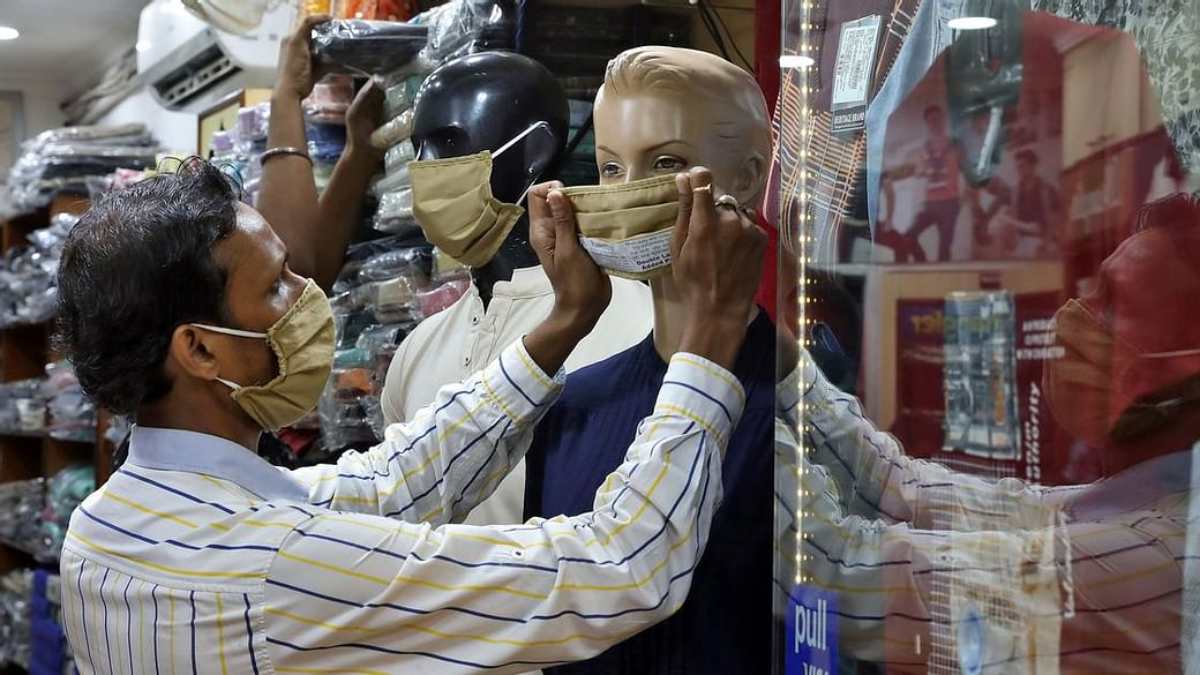
Small Business: A path to growth for small businesses in 2021
Small businesses hold most American jobs and 43.5% of the country’s GDP with fewer than 500 employees. These businesses face an existential threat in the wake of the Coronavirus outbreak. Read more below.
Even though we will have years to unravel the full effect of the Coronavirus on the economy, one thing is painfully clear right now: Small businesses across the country are under attack. In the United States, 48% of jobs and 43.5% of the GDP are provided by companies with fewer than 500 employees.
Despite being a significant part of the U.S. economy, these smaller firms often face financial difficulties, having little cash or resources to cushion any economic shock. The Coronavirus has caused widespread disruptions across the country, causing temporary closures of businesses. Some may never reopen because they have no revenue and ongoing expenses.
They need help to recover once the pandemic is over and once again serve as engines of American innovation. Small businesses are expected to receive more assistance under the Covington Aid, Relief, and Economic Security (CARES) Act. The owners of companies must also make the best decisions possible to tide them through this challenging time.
ADDITIONALLY
Our recent work has examined the economic impacts of Coronavirus on small businesses, as well as ways to mitigate those damages. Together with Alignable, a small business network, we surveyed 5,800 small businesses across the nation to understand their current situation. Companies are represented by a wide range of industry groups, states, and firm-size categories in the sample.
The share of survey responses from states with the most significant business populations matches well. It does not show the entire U.S. economy as a whole but rather shows the intense distress faced by smaller, retail-oriented companies at the very end of March – a snapshot of the crisis.
The CARES relief package faces challenges in its implementation due to its financial resilience. During our research, we aimed to understand how small businesses respond to disruptions and how long they expect the crisis to last. We interviewed bankers, tech representatives, and other organisations with small businesses to understand further how the problem impacts banks, technology companies, and other organisations.
In a dialogue with business and policy leaders, we drew upon our research findings and the broader academic literature to establish a plan of action. This article will outline five key findings of the small business landscape derived from the survey. In addition, we offer small businesses a set of steps they can follow to navigate this difficult time better.
Analysis of the current small business landscape

1. Many small businesses have closed and laid off large numbers of workers.
Covid-19 temporarily closed 45% of our sampled small businesses. Job creation by these companies has dropped by 40% since the beginning of the year. The mid-Atlantic region surrounding New York City was particularly affected by the economic carnage of the American pandemic. Over 55% of the small businesses had closed, and 44% of the jobs had been lost in that area. California has seen statewide closures and an early outbreak in Washington, resulting in a reduction of employment across the entire Pacific region.
Small businesses have been shocked by the magnitude of the demand shock. About 49% of Americans lived under a shelter-in-place or stay-at-home order when we began collecting data on March 26. Approximately 87 per cent of the U.S. population lived under a stay-at-home order the following week. It also emphasizes what a serious situation we are in and how quickly things are moving along.
2. Small businesses often struggle with cash flow issues.
For the vast majority of small businesses, the amount of cash on hand for shocks was less than two months. For a business with monthly expenditures over $10,000, there was barely enough cash to cover two weeks of expenses. It appears that companies will have to cut their spending drastically or fold without a credit lifeline or cash infusion.
The importance of streamlining operations to the greatest extent possible and getting money into businesses rapidly is underscored, not just for banks but also for policymakers. Business resilience will be adversely affected if aid is delayed.
3. even though most of them predict they can reopen by 2021, a majority of those are less optimistic.
By the end of 2021, most respondents expect their businesses to reopen. Despite this, nearly 30% of respondents predict they will reopen by the end of the year, while about 10% think they will not be able to reopen by the end of the year. Cash-rich companies were more confident in their ability to survive the year.
Thus, determining how many businesses will survive will depend on the targeting of current aid and their ability to make other adjustments.
4. Many small businesses disagree about the length of the crisis.
Uncertainty surrounds how long the current disruptions will last for business (and for the rest of us). Our survey revealed that more than three businesses believed disorders would be over by June. A third, however, thought disruptions would last until September.
In this regard, policymakers should be transparent and provide clear guidance about what disruptions to expect in the months to come. Even though the government cannot predict precisely when the Covid-19 pandemic will end, it can be realistic about timelines and commit to economic medicine that will make it possible for the economy to be reopened after the pandemic ends.
5. Businesses are uncertain whether they can obtain loans under the CARES Act.
The survey also showed that many businesses do not intend to seek assistance despite the dire need for cash. Concerns about eligibility prevented many companies from seeking aid. Their financial situation was uncertain, and they had no idea whether the government would forgive the loans. Getting a loan was complex, and they were concerned about the hassle. Moreover, they were worried that the money would not come in time. In light of their worry, the process and implementation of a loan are essential.
The findings present a complex, dynamic, and rapidly changing scenario. The following are the actions small business owners should take right now.
The current crisis can be navigated with these five recommendations.

Here are five tips to help small businesses navigate the current environment based on our research, interactions with businesses (small and large) and the broader academic literature.
1. Take your time when making decisions, but make plans nonetheless.
Millions of people are dying, the stock market is crashing, and unemployment is skyrocketing, so it’s easy to panic. But don’t! Many people these days are suffering from cash flow issues and primed to think about financial stresses, which makes them more likely to make mistakes. Listed below are some tips on making good decisions when things are uncertain.
Don’t rush into making a decision right away. It would be natural to make big decisions during the present climate – to do something – to move forward. Often, entrepreneurs prefer to take action rather than sit on their desks. The Covid-19 crisis unravels every day, so that’s not the best strategy.
In the future, more information will be available to you, so you will make better decisions with better information. It might be helpful to take a cooling-off period before making any big decisions – and maybe even enlist the help of a friend or colleague – to ensure you don’t make any costly mistakes.
The task of “saving my business” can feel overwhelming during these times. Putting together detailed contingency plans is what you need to do as soon as possible (and should do). According to social psychology and behavioural economics research, people who make plans are more likely to achieve their goals. Set smaller goals as you work toward your bigger one.
2. Take advantage of the Paycheck Protection Program right now.
A much-needed lifeline for many small businesses is the Paycheck Protection Program offered through CARES Act. It’s not just a loan. According to the Small Business Administration, it will forgive loans if employees are kept on the payroll for eight weeks and if the money is used for payroll, rent, mortgage interest, or utilities.”
Our study found that many small business owners weren’t applying because of questions about eligibility, delivery times, and forgiveness. This anxiety likely hasn’t been eased by the program’s rocky rollout.
We’ll say it straight: Applying is the right thing to do right now. There is already a flood of money flowing through banks. According to one major bank, there are already 100,000 small businesses seeking financing.
Our conversations with banks confirm that they prioritize their regular customers. Apply as soon as possible. Once you’ve been offered a loan, you can decide when it’s convenient for you.
You must apply for a loan to determine whether you are eligible for one and when the funds might arrive. How you use the money can determine whether your loan will be forgiven. Under the current guidelines, the government will forgive any loan funds used for employee salaries and core expenses like rent over the next eight weeks if at least three-quarters of the funds are allocated to payroll.
To qualify for loan forgiveness, employers must keep or quickly rehire employees and keep salaries the same. In other words, if you downsize, you won’t qualify for forgiveness. You can still get an ultra low-interest loan if you apply for a PPP loan and reduce your payroll.
A forgiveness program is, in a sense, a free option, and options always become more valuable during times of uncertainty.
3. Analyze how the needs of your customers have changed.
A pandemic of Covid-19 is a shock for the entire world. Almost all of your customers’ lives have changed in the last month, and six months from now, they will probably be in a different state.
You might never see them the same way again. During this crisis period, you need to provide them with goods and services to maintain your short-term cash flow. Knowing how their needs will change after the pandemic is crucial to your long-term sustainability.
People are building new habits right now, which is the first thing to consider. Millions of families have been upended by disrupting their routines, and if you want to remain connected to them, you must also experiment. Some restaurants offer takeout comfort food, even if they typically only serve in their dining rooms. Shopping online has become more important to retailers.
A vapid email about how much you care about your customers is not what they need, but they do need entertainment, comfort, and hope. There are certain habits they will maintain after the pandemic, so it’s crucial what you provide during the crisis continues to provide value.
Make sure you think about how your business model will change after a pandemic and bring your customers into the planning process. There will be many poorer customers among your customers, but they will also be eager for fun after spending so long in seclusion.
However, many of them will still be fearful of contagious diseases. They might prefer ordering online instead. If your customers can leave their homes shortly, inquire about how their lives have changed. Ask them about what they hope to look forward to so that they can anticipate the day when they can repeat business with you.
4. Carry out a realistic accounting.
Amid the pandemic, you might be able to reinvent your business. Maybe a post-pandemic world can help you and your business thrive. However, most businesses are suffering enormously, and you’re going to need to make some tough choices after searching for creative solutions and taking time to plan.
During and after the pandemic, you should make realistic estimates of your cash flow. Those costs should be compared with your fixed expenses and those that can be reduced. You may want to consider cutting the less crucial expenses early to continue paying the more flexible expenses later.
The next step is to decide which expenses you can delay. In Oakland, landlords have been prevented from evicting tenants or businesses for two months. It would help if you were honest with your landlord about what you can afford. Bear in mind, though, that you might not catch up immediately.
Also, it would help if you stayed on top of other forms of public assistance and other ways that can help bridge the gap in the future. It is a rapidly changing landscape. Many organizations, including Facebook, Verizon, the James Beard Foundation, and Amazon, have stepped up to provide relief grant programs for small businesses.
5. Make sure your best employees remain loyal.
The most valuable asset you have is always your workers. It will be even more difficult to rebuild your operations if you lose your best ones during the crisis. It is important to maintain your ability to rehire your best workers, even if you must reduce labour costs dramatically during the crisis. Remember to be human during these tough times.
Congressionally-mandated small business loans are designed to prevent employers from laying off employees. Still, the government is also offering unemployed workers an extra $600 weekly bonus, meaning some workers will be better off if they are laid off. It’s important to ensure that a temporary layoff doesn’t become a permanent separation between your company and its employees if that is the best plan for you and your workers.
Instead of firing, use furloughs. Consider these options with your employees and make sure the decision feels temporary and mutual. You should focus on retaining the people who feel like the best fit for your company and care about staying with it if you make tough decisions about who you want to keep.
Let’s be human to each other at this time. There are many reasons why your employees are probably going through a tough time during this period, regardless of what happens with your business.
One of the main reasons is that many of them have elderly parents. Ensure their safety and show that you care for their well-being by doing everything you can. Generosity fosters strong relationships during crises.
Banks and policymakers must do more to assist small businesses facing unprecedented challenges. Businesses need clear and credible guidelines from banks and policymakers, for example. Loan forgiveness rules can be clarified, and uncertainty about getting a loan can be eliminated.
Often, large banks assume that they need to focus only on inbound requests, but our research indicates that they need to reach out to small businesses and build relationships.
The good news is, small business owners can also take measures to ensure they are doing the best they can given the circumstances. For small business owners and managers to cope with the current crisis, they must be prudent and urgent at the same time. The broader picture needs to be understood.
It is essential in these situations to be aware that avoidable mistakes can be made in decision making. It is possible to navigate this complex environment if we take the time to avoid such mistakes and think through the broader set of available levers.




